#nordberg
Explore tagged Tumblr posts
Text
Diät, Nightmare from Positive Energy (2015).
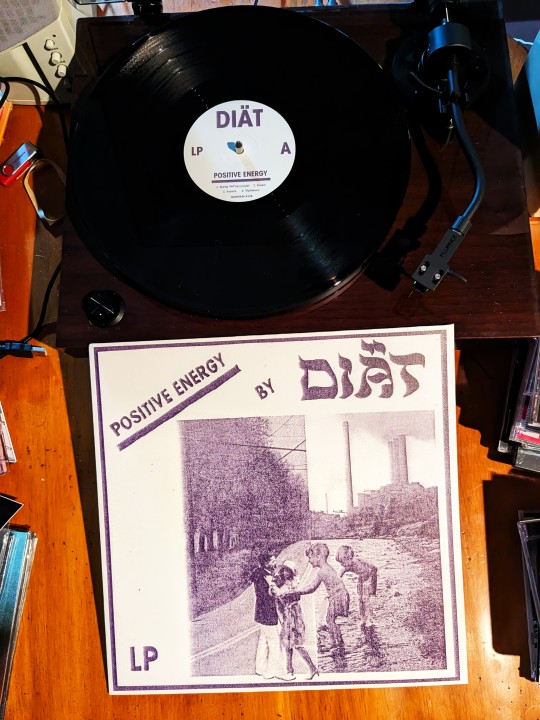
Brilliant nouveau post-punk album.
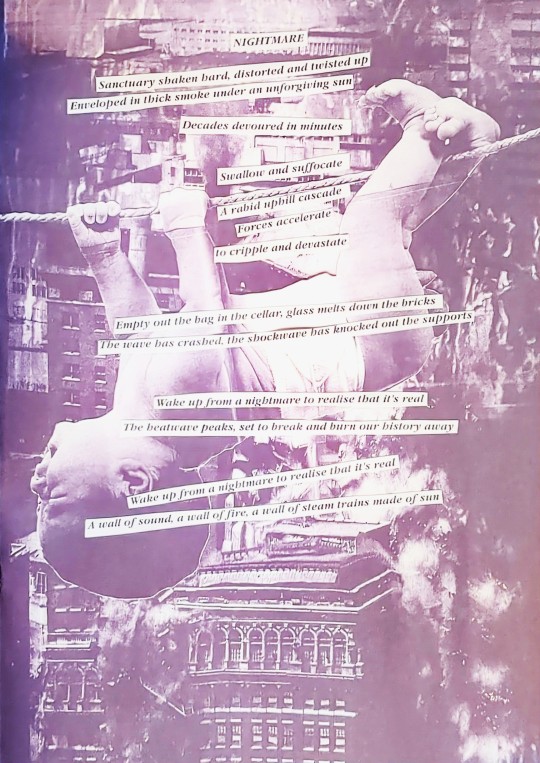
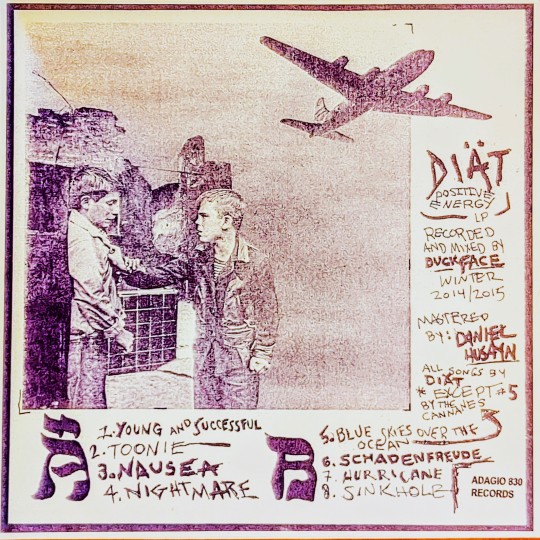
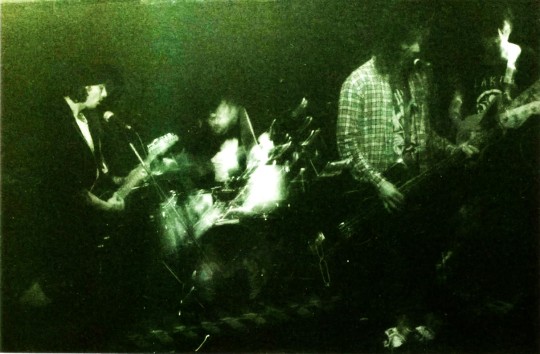
#diät#positive energy#nightmare#tobi#neutron#iffi#nordberg#post punk#post hardcore#cold wave#vinyl records#vinyl albums#record collection#album collection#vinyl collection#vinyl rip#audio post#berlin
51 notes
·
View notes
Text

Presented without commentary.
#naked gun#leslie nielsen#priscilla presley#orenthal james simpson#nordberg#the smiths#cemetry gates#4/11#Spotify
6 notes
·
View notes
Text
0 notes
Text
youtube
The Naked Gun: From the Files of Police Squad! (1/10) Movie CLIP - Nordberg's Bad Luck (1988) HD
s/o my man OJ - he was sooo funny in these movies
0 notes
Photo

The Forest Angel Chart (Knitting) by Melanie Nordberg
4K notes
·
View notes
Text

Time and Tide will be showing at 9:50 tonight (8/11/23) on the above website. It will also be showing on 22nd November 2023 at 9pm.
15 notes
·
View notes
Text

Fen and Theresa. I love their younger-older sister dynamic. I can imagine Theresa giving lots of advice to Fen since she is her senior.
9 notes
·
View notes
Video
Magazine story illustration by B. Nordberg, Allas Veckotidning nr 30 July 1959 by Once a garden - now feral
#magazine story art#1950s#1959#Allas Veckotidning#1950s magazine#1950s illustration#illustration#B. Nordberg#1950s art#flickr
3 notes
·
View notes
Text

Olle Nordberg - Boat on a lake. 1951
3 notes
·
View notes
Text
Deicide share new track "Bury The Cross... With Your Christ"
Deicide share new track "Bury The Cross... With Your Christ"
Photo by: Deidra Kling Deicide have released a new track titled “Bury The Cross… With Your Christ”. Frontman Glen Benton said of the track: “Welcome to the Feast of Fools and bow before your lord almighty the end is upon us….bury the cross.” The video was directed by David Brodsky for My Good Eye: Music Visuals, who also worked on the clip as cinematographer, editor, graphics, and…
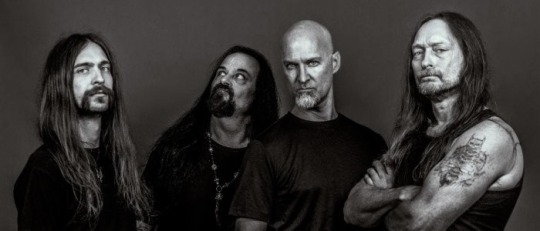
View On WordPress
#Allison Woest#Banished By Sin#Bury The Cross... With Your Christ#David Brodsky#Deicide#Jeramie Kling#Josh Wilbur#Kelly Harris#My Good Eye: Music Visuals#Reigning Phoenix Music#Smoke & Mirrors Productions#Taylor Nordberg
2 notes
·
View notes
Text
Book Review: The Underground Girls of Kabul by Jenny Nordberg
Published: July 14, 2015 Category: Non-Fiction Rating: 4/5 Stars Genres: History/Biography Age Rating: 15+ Warnings: Arraigned Underage Marriage, Sexism It is on a watch list of books in Texas! Quote: “When I asked Afghans to describe to me the difference between men and women, over the years interesting responses came back. While Afghan men often begin to describe women as more sensitive,…
#Afghanistan#Biography#blog post#Book Blog#book review#Jenny Nordberg#Non-Fiction#Read Around the World#The Underground Girls of Kabul#Watch list book
0 notes
Text
Girlfriend's Day (2017)
In today's review, my heart bleeds black as I express my undying love of the written word. As I attempt a #positive review of the 2017 Netflix comedy/drama, Girlfriends Day #BobOdenkirk #AmberTamblyn #RichSommer #TobyHuss #DavidSullivan #HannahNordberg
How many ways are there to say I love you? Of the countless tomes of musical lyrics, countless poets throughout the eras and Valentine’s messages, show that there are still a million ways to say it. We’ll persevere to get our message across, even if it kills us. In 2017, a quirky film examined the world of those writers, with a chandler-issue look behind the darkness that goes onto the page, in…

View On WordPress
#2017#Alex Karpovsky#Amber Tamblyn#Andy Richter#Bob Odenkirk#David Lynch#David Sullivan#Echo Kellum#film#films#Hannah Nordberg#June Diane Raphael#Larry Fessenden#Movies#Natasha Lyonne#positive#review#Rich Sommer#Stacy Keach#Stephanie Courtney#Steven Michael Quezada#Toby Huss
1 note
·
View note
Note
G-G-G-G-Gomen user Ash-S-Senpai … may you please help this cancer riddled patient in seeing Einar happy.. my time is almost up and I can barely type .. (koi core) so can you maybe write Einar being happy with his family? All alive and well , no it being a dream twist , no strings attached .. just a happy AU .. this will make my fight against cancer be a little bit easier.. thank you..
In Another Life — Einar

𖤐 general happy!au!einar headcanons <3
happy!einar if he never had fought with his brother, vidar. as he grew pent up and yelled to him from his cries of desperation, his eyes softened, glazing over the young one’s concerned face. he pursed his lips and stood up from his seat, flinching as his brother took a step back. “i’m sorry,” he whispered, trying to face vidar. and even as he couldn’t, he slowly walked up to the smaller boy at the verge of tears and embraced him, “i’m sorry. now … what was it that you wanted to play again?” — if their conflict was always fixed from the start …
happy!einar who never had his brother run away from home.
happy!einar who never had to be admitted to the orphanage after his parents’ declining mental and physical health from vidar’s loss — no longer facing the alcoholic scents and the dreading conundrum of a burning scream. he never had to face that, ever.
happy!einar who studied at high school and graduated as valedictorian; his eyes studied the faint crowds and his smile almost faltered, but there he saw — his parents and vidar, clapping the loudest and brightest during his valedictorian speech. as he concluded his words, he sent off a nod of joy and gave a prideful smile. he had everything now.
happy!einar who never had to be starved in the orphanage which is why he managed to grow his full height of 6’3 instead of 5’10 in his past life. his build is more fit and lean than his exhausted, scrawny self. his face no longer carries eye bags or a gloomy fatigue; it is always a bright smile and slightly crinkled eyes. he adores ruffling his younger brother’s hair as being slightly taller than him and grinning, “you’ve gotta be taller than that.”
happy!einar who, despite never going to the orphanage, still somehow manages to find his wife from another life: elyse. he had been walking through the streets to retrieve groceries for his family when he felt someone bump into his embrace, perfectly enclasping into his arms. he shook his head and faced the woman, softly whispering, “are you okay?” then she shakily whispered, “please— pretend to be my boyfriend for just a moment—” and before her explanation could conclude, she already linked arms with einar and a man had hurriedly turned from the corner of the streets, locking eyes with her then to einar.
happy!einar who has a more intimidating look now that he’s taller. he glared down to the other man who gritted his teeth. “bae… he’s bothering me,” the woman gently said, taking a step back as the stranger reached out to grab her hand. “are you fuckin—” “yes, she is serious,” einar quickly spoke as he gripped the man’s wrist and raised his eyebrow. “please do not bother us; who even are you? we are on our date today and we don’t need a creep like you ruining it,” he continued. the stranger gave a disgusted glance and was about to retort when the crowds came to stare at him. out of shame, he ran away, leaving einar and the woman with locked arms.
happy!einar whose expression turned to a soft worry as he faced her again. “that was my asshole ex,” she sighed, letting go of einar’s grip. she flashed a soft smile — gods forbid it was the most seraphic moment of einar’s entire life. his lips parted in shock and he immediately closed them, his cheeks turning into a bright shade of red. the woman only chuckled at the sight. “i— i am einar; einar nordberg. how about you..?” he asked, worried if asking for a stranger’s name was odd. “i’m elyse,” she smiled and tilted her head.
happy!einar who coincidentally became elyse’s new neighbor and couldn’t stop visiting her. vidar would often whine and complain as einar would be putting on his shoes and heading out. “this is the third time this week, mama,” vidar jokingly groaned and signaled to einar by the front door. “and it won’t be the last,” einar grinned teasingly before heading on out.
happy!einar who ends up dating and marrying elyse; just like they did in their past lives. the two have happy, well children: shayla and kallias; just like they did in their past life.
happy!einar who does end up serving the military just like his father did, but this time, the incident doesn’t happen. his unit are all still alive, his friend is never hurt, and he serves his full role as a captain then retires. he never gets his unit slaughtered or his friend mangled. he never meets his worst enemy and nightmares on the battlefield. he simply survives.
happy!einar who always lets vidar visit his nephews. the little ones cling onto their uncle’s legs and the three childishly form their little tea party in their room. einar would often be forced to join in with a pink bonnet over his head. he rolls his eyes and only smiles as his three, dearly loved ones all laughs and giggle at the sight. he stares at elyse, leaning by the doorway and laughing to herself as well.
happy!einar who carries both of his children every single time and would be tossing them up and down carelessly, laughing and teasing as they squeal in joy. he adores watching them be so energetic and happy; it’s all he ever lived and worked for all this time.
happy!einar who loves spoiling his family (parents and brother are definitely included). whenever it’s holiday season, he packs his parents with endless supplies and gifts. he always buys his brother something that he vaguely mentioned or something that he simply knew his brother would love. he gets stacks of toys for both shayla and kallias. and for elyse? he brings her a small box of all of their pictures from their past years and a small, pricey necklace, “to symbolize our forevermore, expensive love that not even the lords could dare to squeeze away from our grasp.”
happy!einar who is slightly overprotective about his brother getting into a relationship, always squinting his eyes whenever someone (male or female) gets even slightly physical with vidar. his wife always tells him that it’s nothing, but he doesn’t care. that is his brother and he can’t have some random, toxic bozo take him away. he grits his teeth at the thought of someone ever hurting his brother. if you are his lover and you dare to make him cry in the slightest manner, you will fight a bat to your head (/j … /hj). but even despite the protective manner, he still loves his brother and lets him have his own life. he yearns for a day that he becomes an uncle too; perhaps more than the day that he becomes a grandfather.
happy!einar who attends every. single. event. that his kids have. a school play for shayla? already there with a flower bouquet. a choir concert for kallias? crying over the performance by the end. a child-parent day festival? he is a military man, he is going to solo these ass parents. he does whatever he can to be a part of his children’s lives and never let them down. that’s the least he can do as a parent.
happy!einar who spends so much time with his brother and always is there to soothe him. the two will go on casual walks and small nature trips they always loved as children. they banter occasionally but never fight too much. if vidar ever got children (adoptive or not), einar is the first in line to baby sit them. he would be spending more time with the kid than vidar does. he probably was wary about vidar’s partner for a long while then just warmed up and considered them apart of the family too. he is protective, not toxic. he loves giving vidar’s family hugs and holds them in his embrace for a long while as a way of showing affection and support.
happy!einar who grows old gradually and watches his children grow up. he gets wary whenever his dear daughter shayla decides to bring a boy home. even worse when he spots kallias kissing a man in the backyard. he would literally shoot whoever messes with his kids and it is a known fact. he is tall and fit; he can handle your bullshit. he still attends every events despite his aging self. he never forgets to kiss his kids goodnight and make their favorite meal on sundays. he sees how shayla grows with the dream of becoming an actor and kallias started his own youtube channel with his self-written songs. he still loves them whatever their dreams are. he sits on the couch with elyse leaning on his shoulder and sighs, “i love you so much.”
happy!einar who lived his life to the fullest and watched all of his loved ones turn out to be the people they deserve to be. he doesn’t mind if he has to die of old age. he will only smile and whisper, “thank you.”
13 notes
·
View notes
Text
Sources for "Changes"
German Version
Hi, I finally got around to look up the sources and copy them that were the direct inspiration for the fic.
First of all some general background on the meeting of Karl and Ulrika in Vadstena from Ragnhild Hatton: Charles XII, p. 442f:
A meeting with Ulrika Eleonora had been much discussed during the summer, and Vadstena - one of the palaces of the late Queen-Grandmother - was picked on as not being too distant for Ulrika and more or less en route for the King's own move south for the time when he thought invasion possible. The meeting with his 'dear sister', Charles wrote to Frederick, might have to be shorter than he would wish - perhaps the military situation would permit only a single day - but he was not prepared to sacrifice this opportunity to see and speak to Ulrika unless Frederick summoned him urgently to Scania. If this should happen, he implored Ulrika to remain at Vadstena that he might take the next opportunity of a visit - Stockholm was too distant.
Neither Frederick, nor the war, put obstacles in the way and brother and sister spent the Thursday and Friday of 30-31 August together. Charles did not bring adjutants with him and we have little factual information of his stay at Vadstena except from Ulrika's letters to her husband and a reference to the emotional impact of the meeting which she penned in her 1740 comments for Nordberg's history of Charles XII. We know that the King left Major-General de la Gardie in command of the border troops on 26 August and rode over Strömstad, Uddevalla and Vanersborg to Hjo on lake Vättern. He was rowed across the lake in heavy rain, rode the last few miles completely alone and was able to take Ulrika 'by surprise' as he had wanted to do since December 1715. His cape was dripping wet, we hear from one of Ulrika's ladies-in-waiting, and the little court was thrown into a joyful confusion at his unannounced arrival.
There may have been a childish element in Charles's wish to take 'by surprise', but privacy was probably the dominating motive. Charles knew that the reunion with his only remaining sister would affect him deeply. Ulrika noted that they both cried and that Charles found it hard to control his emotion when they talked of their parents, of Hedvig Sophia and of the family life they had once shared: his voice thickened and the tears were never far away when the mother's name was mentioned. They got on surprisingly well together considering the readjustments, partially achieved by correspondence, necessary after an interval of sixteen years in which the 'baby' sister had become a mature woman.Charles won Ulrika's heart during their long talk alone on Thursday evening by praising her husband and his brave services to Sweden. The next day had to be a more public one. They listened to the Friday sermon preached by one of the court chaplains, and Charles must have seen something of Ulrika's ladies-in-waiting (all old acquaintances) since he sent greetings to them by name in his first letter from Lund. At 10 o'clock in the evening of 31 August, after supper, the King took his leave and over Jonkoping reached a main road to Scania.
Link to the book on archive.org
Now about the thing that Karl didn't want Ulrika to call him 'Your Majesty' from his letter to her from 17th/27th January 1711, English translation by me based on the German translation by F. Mewius, post with the whole letter:
In confidence I have to ask my dear sister for something, which has always been bothersome to me. I just didn’t know how to come forward with this; because I have to complain about Mon Coeur, who doesn’t call me brother, but always makes other compliments to him, who is nothing else but my dearest sister’s only brother and humblest servant.
And finally how he saw (or hoped to see) Ulrika in relation to himself, from his letter from 2nd/13th September 1714, English translation by me based on the German translation by F. Mewius, post with the whole letter:
I’ve been very joyed by Liven’s arrival; since I not only received Mon Coeur’s most dearest letter through him, but also was verbally informed of Mon Coeur’s preferable wellbeing, although at the same time I grudgingly also heard of the woes, which Mon Coeur was feeling over the demand that the Council made and that Her Majesty the Queen has agreed to, that Mon Coeur was supposed to attend the meetings of the Council.# Mon Coeur can surely imagine, that I can’t find that, what’s regarding MonCoeur, anything but good, and that I gladly saw that Mon Coeur gave her agreement and wants to take on these efforts. I am sure it will be useful for the accomplishments of many things, especially if the Council is through this encouraged to to work more cautiously than it has happened for a few years now.
[......]
With this opportunity several different letters are going to the Council and answers to its letters. I have tried to indicate to Mon Coeur in this letter of mine what the letters that are leaving from are containing. Since I’ve difficulties with writing and Mon Coeur will see everything in the Council, I ask Mon Coeur don’t blame me that I don’t write about everything. I hope, Mon Coeur will find it good, what I wrote to the Senate on the matter of Mon Coeur’s presence in the senate, as well that I didn’t write to Mon Coeur in the same letter as the senate. Because Mon Coeur and the senate can’t be understood as something belonging together, as well as Mon Coeur can’t be seen as a member of the Senate, but as one who in the same way as me is above the Council and supervises the businesses and ventures which have been entrusted to the Council, so that Mon Coeur supervises at home over that which is supposed to be carried out in the same way I announce it to them during my absence in my letters from here. Concluding from that, regarding the exchange of letters between me and the Council, Mon Coeur and me can’t be seen as something else but a single person who is in two places at once, and equally the Senate forms a particular person or a College. My letters to the Council can therefore not be addressed to my sister at the same time; because that would be the same as if I were writing to the Council and myself at the same time. Furthermore I’m often of a completely different opinion than the Senate and can therefore all the less write in the same letter to Mon Coeur, as both, who are one, can only have one will too; but the matter with the Senate is a complete different one
Link to the book with the original letters in Swedish language
Should any questions remain I am of course always open for them
6 notes
·
View notes
Text

"Poema di un gatto randagio"
Forse non sarò mai un gatto da grembo, e non sentirai mai il mio fare le fusa. Magari preferisco la libertà al calore di una casa, o rifiuto il cibo migliore solo per cacciare un topo gustoso.
Ma c'è qualcosa che vorrei dirti: quella scatola che mi hai lasciato è calda, asciutta e sicura. Il mio modo di ringraziarti è lo sguardo distante e puro, occhi che brillano quando arrivi con il piatto della tua amicizia, o le mie orecchie che ascoltano i tuoi passi, sapendo che la fame finirà.
Forse non sarò mai un gatto da grembo, ma in questo mondo di strade e notti, so che mi hai dato la tua amicizia.
Traduzione libera del poema "Poem from a Feral Cat" di Melanie Nordberg
7 notes
·
View notes
